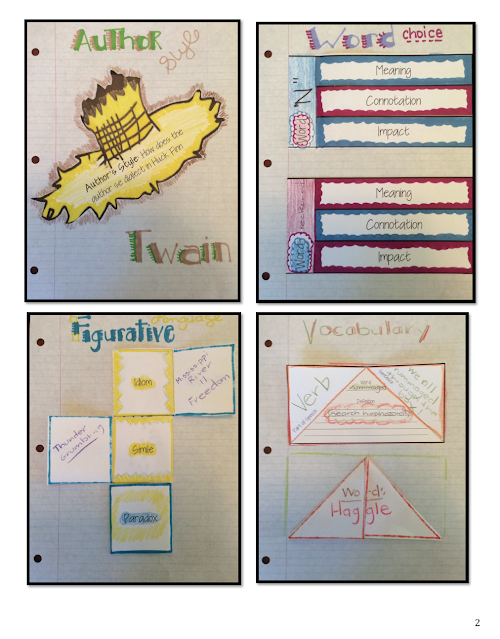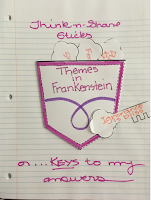What is an Interactive Notebook?
In simplest terms - an Interactive Notebook is a pop-up book!
 We all loved pop-up books. If the truth be told, I would love to see some of the literature we require of our students - and read ourselves - to contain pop-ups. Can you imagine much more engaging say, The Scarlet Letter would be if a student turned a page and up pops Hester Prynne, baby in arms, leaving a prison -- and the crowd of people pop-up, but when you pull the paper toggle marker - Hester turns into a goat - overtly alerting students that she is the scapegoat for all of their sins. Not only would they want to read more - they'd remember more. Why do we stop adding pictures, and interactive ones at that, because students get older.
We all loved pop-up books. If the truth be told, I would love to see some of the literature we require of our students - and read ourselves - to contain pop-ups. Can you imagine much more engaging say, The Scarlet Letter would be if a student turned a page and up pops Hester Prynne, baby in arms, leaving a prison -- and the crowd of people pop-up, but when you pull the paper toggle marker - Hester turns into a goat - overtly alerting students that she is the scapegoat for all of their sins. Not only would they want to read more - they'd remember more. Why do we stop adding pictures, and interactive ones at that, because students get older. Admit it - wouldn't you love to see David McCullough's 1776 "popped-up? Or, how about Steven King's - well anything by Steven King - popped up! Our minds think in pictures - the first letters were pictures - so to speak - and emoticons seems to be sending us back to the hieroglyphics found in ancient tombs - see Fortune Magazines: A Return to Hieroglyphics. So why not pop-ups for older students and adults and if publishers are not going to provide them for our students - you can help them make their own by using Interactive Notebooks.
Interactive Notebooks are "popping" up everywhere (pun intended) and for good reason - they help embed critical concepts and important information into the minds of students. Imagine ears popping up in IV.vi.21 or when Claudius says the whole ear of Denmark is "Rankly abused..." (I.v.36-38) - bam! up comes another ear.


So, what is an interactive notebook - a wonderful teaching tool by way of a self-made pop-up notebooks - you provide the templates, pictures, foldables, cutables - or have your students and learning becomes tactile, interactive, social and engaging. I say social - because I let my students talk - as long as most of the topic is on the subject. I flat out tell them - okay so if you're going to talk about the game on Friday - you better do in within the confines of the interactive notebook you are creating - this is a great way to insert formative assessment - you'd be surprised how well you can tell which students are grasping a concept when it is relayed back and forth in terms of a football game, dance or even the latest Instagram or Snapchat trends. Can Formative Assessment be fun - yep.
The Interactive Notebook page samples in this page come from my Huckleberry Finn Novel Study and illustrate some of the interactive pages you can create for your students
Bonus: Interactive Notebook Pages are naturally differentiated - as the output students provide demonstrates their individual levels of understanding, they help students synthesize their work, and they help students expand their knowledge.
High School Novel Units with Formative Assessments Included:
Interactive Notebooks make teaching fun and learning engaging. If you need more tips and tricks or would like a specific lesson, book or novel turned into interactive notebook pages - please email: elizabethpinotti@gmail.com - turn around is about a week, but I have many already available. I also have a collection of 80 Common Core State Standards Interactive Notebook templates - that are generic and can be used with any story or novel; however, the more tailored to the book the more engaging! Interactive Notebook Pages and Foldables.
Have a great day!
Elizabeth Chapin-Pinotti







